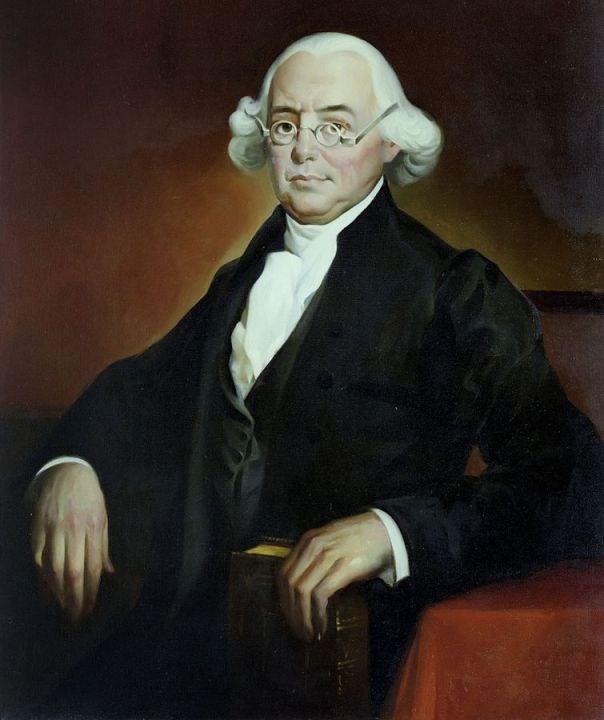(NewsNation) — The United States has become an increasingly diverse nation over the decades, and that diversity has been reflected in the membership of the nation’s top court.
Judge Ketanji Brown Jackson, whose Supreme Court nomination is widely expected to be confirmed by the U.S. Senate, would be the first Black woman to reach the highest pinnacle of U.S. jurisprudence. Her appointment would be the latest in a long line of firsts:
James Wilson: The First Justice
Wilson, one of America’s Founding Fathers, was the first official justice of the Supreme Court. He was appointed to the position in 1789 and served for 10 years until he died. Over that period, the Supreme Court only heard nine cases; justices at that time would instead often go to lower courts and handle cases there. While he holds this place in history, Wilson may be even more famous for being the “principal architect” of the American presidency.
Interestingly, he was denied another “first” he badly wanted: to be the first Chief Justice of the Supreme Court. That honor went to another Founding Father: famed diplomat and co-author of the Federalist Papers, John Jay.
Roger B. Taney: The First Catholic
While the white population of colonial America was primarily Protestant, Catholics began showing up in greater numbers in the 19th century. Taney became that faith’s first chief justice, holding the office from 1836 until his death in 1864.
Taney may be best known for the “Dred Scott” decision, which declared that African-Americans could not be considered citizens and that Congress could not prohibit slavery in U.S. territories. To this day, many scholars consider it the worst opinion in the Supreme Court’s history.
Though he remained a Catholic throughout his life, Taney married Anne Phoebe Charlton Key, sister of Francis Scott Key, best known for writing the national anthem, and their six daughters were all raised in the Episcopal Church to which Anne belonged
Louis Brandeis: The First Jew
In 1916, Louis Brandeis becomes the court’s first Jewish justice. According to Wikipedia, his nomination was bitterly contested, partly because, as Justice William O. Douglas later wrote, “Brandeis was a militant crusader for social justice whoever his opponent might be. He was dangerous not only because of his brilliance, his arithmetic, his courage. He was dangerous because he was incorruptible … [and] the fears of the Establishment were greater because Brandeis was the first Jew to be named to the Court.”
Starting in 1890, he helped develop the “right to privacy” concept by writing a Harvard Law Review article on the subject, and was thereby credited by legal scholar Roscoe Pound as having accomplished “nothing less than adding a chapter to our law”
Thurgood Marshall: The first Black justice
Thurgood Marshall had already made history by arguing the groundbreaking Brown v. Board of Education of Topeka case before the Supreme Court, thereby ensuring that segregation in U.S. schools was declared unconstitutional.
Denied entry at the University of Maryland law school in 1930 because he was not white, Marshall attended Howard University, graduating first in his class in 1933.
Originally placed on the U.S. Circuit Court by President John F. Kennedy, Marshall was nominated for the high court by Lyndon B. Johnson in 1967 and confirmed by a resounding 69-11 vote. He was on the court until 1991, during which time he went from being part of the liberal majority to being the “Great Dissenter” as the court grew more conservative.
Sandra Day O’Connor: The first woman justice
In 1981, Republican President Ronald Reagan shocked many by nominating the first woman in history to the Supreme Court. Earlier in her life, despite holding a law degree from Stanford University, O’Connor had been unable to find employment with a law firm (one offered her a job as a secretary) because she was a woman.
She entered politics in 1969, being elected to the Arizona Senate as a Republican and eventually becoming its majority leader, the first woman in the country to ever attain such an office. In 1975, she was elected as a Superior Court judge in Maricopa County, serving until 1979, when she moved to the Arizona Court of Appeals. From there, Reagan nominated her to the high bench.
During her time on the bench, O’Connor was a tireless crusader for judicial independence, renowned for her pragmatism and ability to craft opinions that steered clear of politics and emotion and stuck to the law. Current arguments against gerrymandered legislative districts, for example, owe a lot to her writings.
She retired from the bench in 2006. In 2018, she announced that she’d been diagnosed with early-stage dementia and would withdraw from public life.
Sonia Sotomayor: The first Latina justice
Having decided at the age of 10 to become a lawyer after watching an episode of “Perry Mason,” Sotomayor excelled in school, and entered the working world armed with a law degree from Yale.
She earned her first judicial appointment from President George H.W. Bush, and was promoted to the U.S. Court of Appeals for the Second Circuit by President Bill Clinton, thus giving her presidential endorsements from both parties. President Barack Obama nominated her to replace retiring Justice David Souter, and she won approval on a 68-31 vote.










